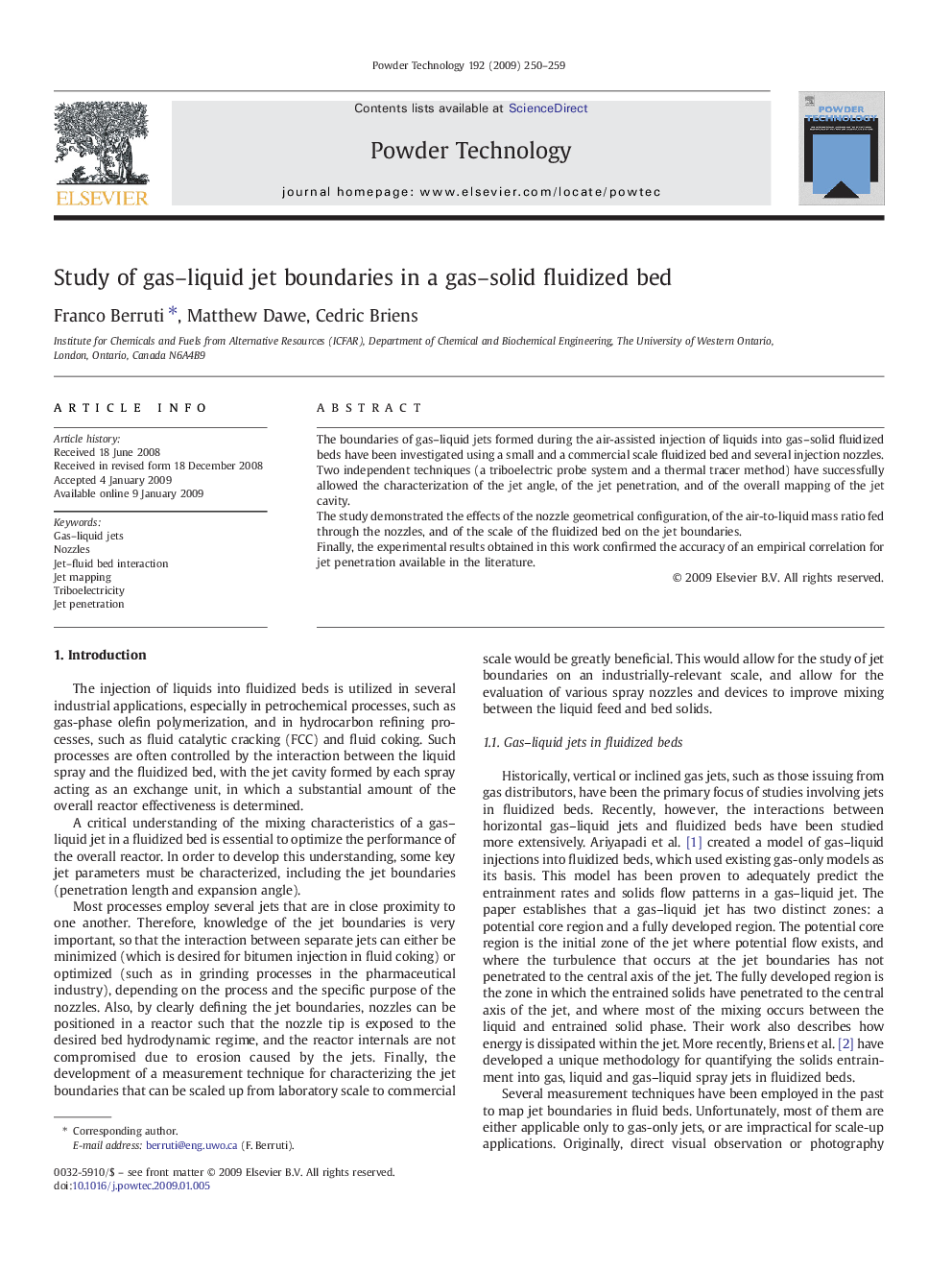| Article ID | Journal | Published Year | Pages | File Type |
|---|---|---|---|---|
| 238435 | Powder Technology | 2009 | 10 Pages |
The boundaries of gas–liquid jets formed during the air-assisted injection of liquids into gas–solid fluidized beds have been investigated using a small and a commercial scale fluidized bed and several injection nozzles. Two independent techniques (a triboelectric probe system and a thermal tracer method) have successfully allowed the characterization of the jet angle, of the jet penetration, and of the overall mapping of the jet cavity.The study demonstrated the effects of the nozzle geometrical configuration, of the air-to-liquid mass ratio fed through the nozzles, and of the scale of the fluidized bed on the jet boundaries.Finally, the experimental results obtained in this work confirmed the accuracy of an empirical correlation for jet penetration available in the literature.
Graphical abstractThe boundaries of gas–liquid jets formed during the air-assisted injection of liquids into gas–solid fluidized beds have been investigated using a small and a commercial scale fluidized bed and several injection nozzles. Two independent techniques (a triboelectric probe system and a thermal tracer method) have successfully allowed the characterization of the jet angle, of the jet penetration, and of the overall mapping of the jet cavity.Figure optionsDownload full-size imageDownload as PowerPoint slide
